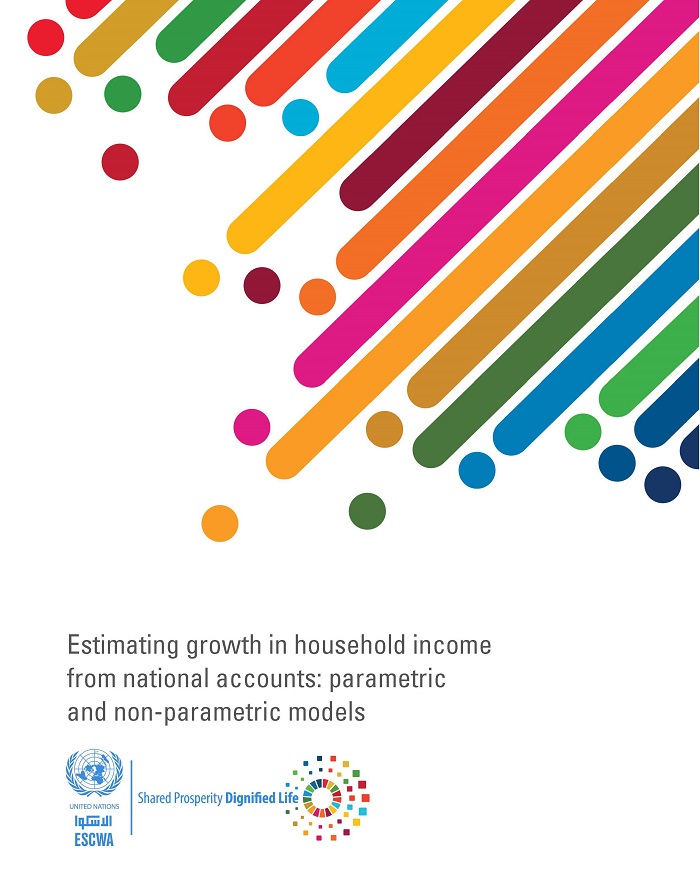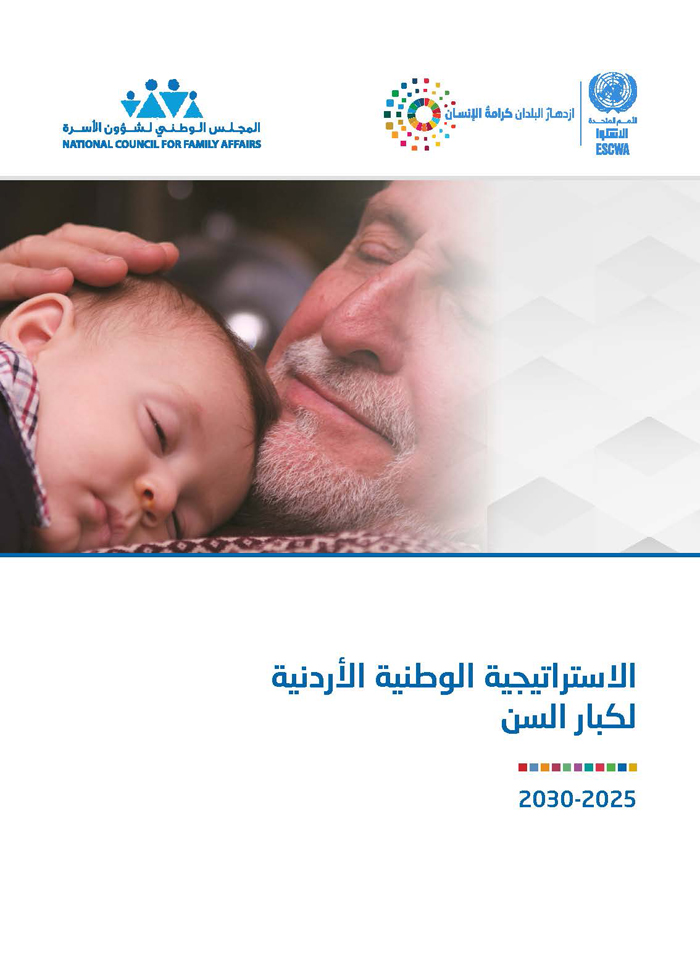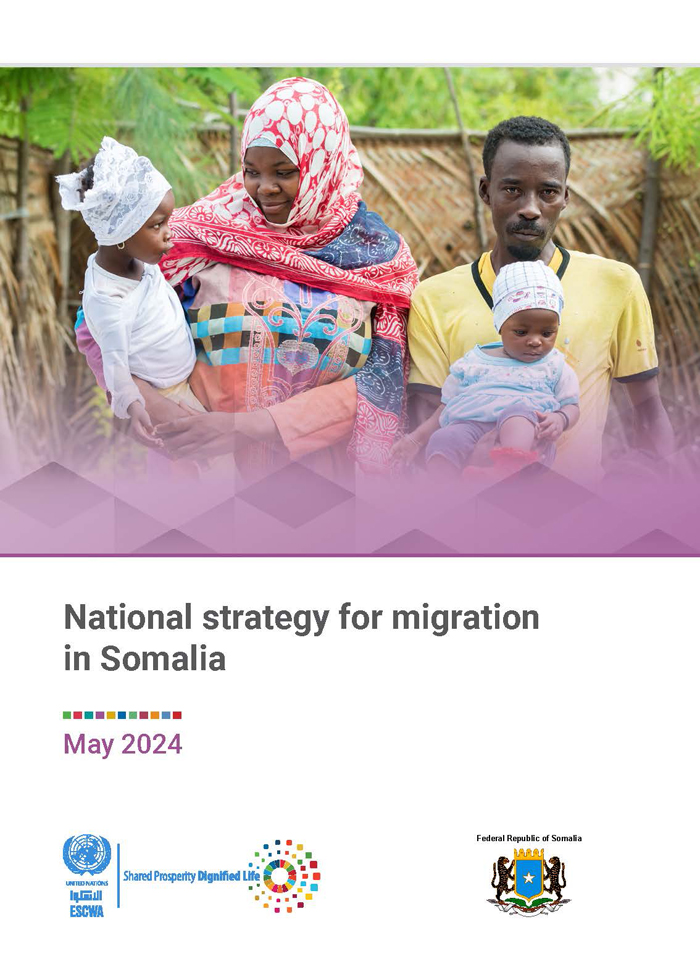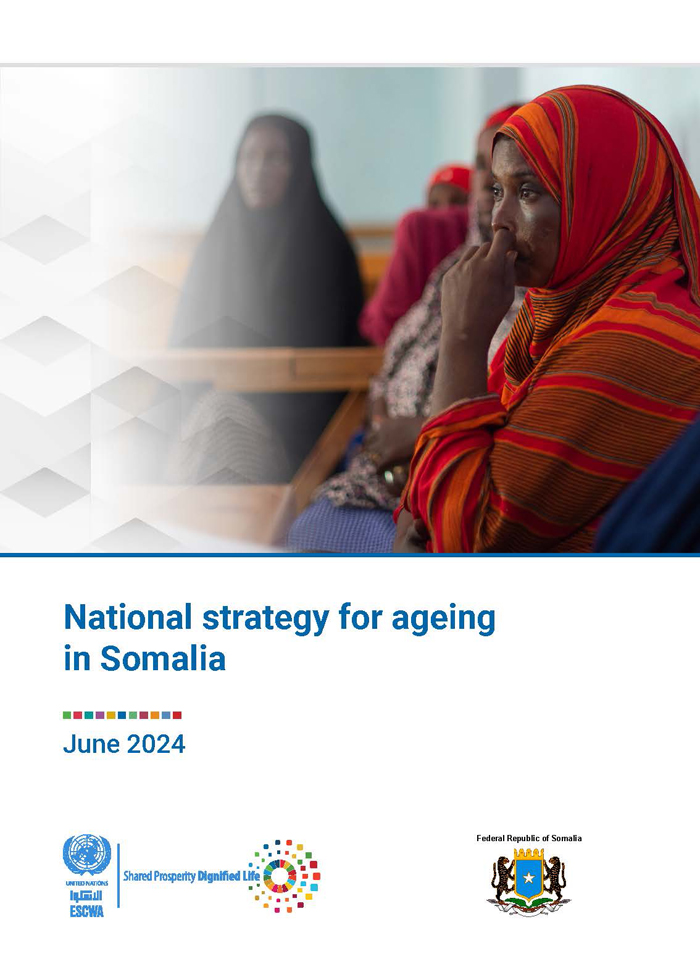
ESCWA Publication: E/ESCWA/CL2.GPID/2023/TP.4
Country: Global
Publication Type: Information material
Cluster: Gender Justice, Population and Inclusive Development
Focus Area: Debt and fiscal policy, Inclusive development, Macroeconomics
Initiatives: Financial & macroeconomic statistics for National accounts, Public finance and inclusive fiscal policy
SDGs: Goal 1: No Poverty, Goal 8: Decent Work and Economic Growth, Goal 10: Reduced Inequalities, Goal 12: Responsible Production and Consumption
Keywords: Household expenditures, National accounts, Income distribution, Macroeconomics, Developed countries, Data analysis, Statistical data, Surveys, Poverty, Debt, Urban population, Inflation, Equality, Unemployment, Development indicators
Estimating growth in household income from national accounts: parametric and non-parametric models
March 2023
This report proposes and evaluates alternative parametric and non-parametric methods for estimating household income/expenditure levels based on national accounts data for 183 countries. The current report shows that the growth passthrough rates typically fall short of unity and vary systematically across countries in different world regions, income-level strata and other country groupings. It also shows that the proposed models can estimate the passthrough rates reliably, especially if the analysis is clustered by country type. Lower-income countries exhibit lower growth passthrough rates, but the passthrough rates increase with the level of development.
The passthrough rates are notably low in the Arab region, South Asia and Sub-Saharan Africa. In the Arab region, passthrough rates vary greatly across subregions. The report concludes that developing countries, especially poorer countries, should be concerned with macroeconomic and distribution policies that enhance aggregate income growth – especially in poorer countries with lower income and expenditure per capita and with greater scope for enhancing the passthrough of growth to households.
Related content
Debt and fiscal policy
, Inclusive development
, Macroeconomics
,
This report proposes and evaluates alternative parametric and non-parametric methods for estimating household income/expenditure levels based on national accounts data for 183 countries. The current report shows that the growth passthrough rates typically fall short of unity and vary systematically across countries in different world regions, income-level strata and other country groupings. It also shows that the proposed models can estimate the passthrough rates reliably, especially if the analysis is clustered by country type. Lower-income countries exhibit lower growth passthrough rates, but the passthrough rates increase with the level of development.
The passthrough rates are notably low in the Arab region, South Asia and Sub-Saharan Africa. In the Arab region, passthrough rates vary greatly across subregions. The report concludes that developing countries, especially poorer countries, should be concerned with macroeconomic and distribution policies that enhance aggregate income growth – especially in poorer countries with lower income and expenditure per capita and with greater scope for enhancing the passthrough of growth to households.



